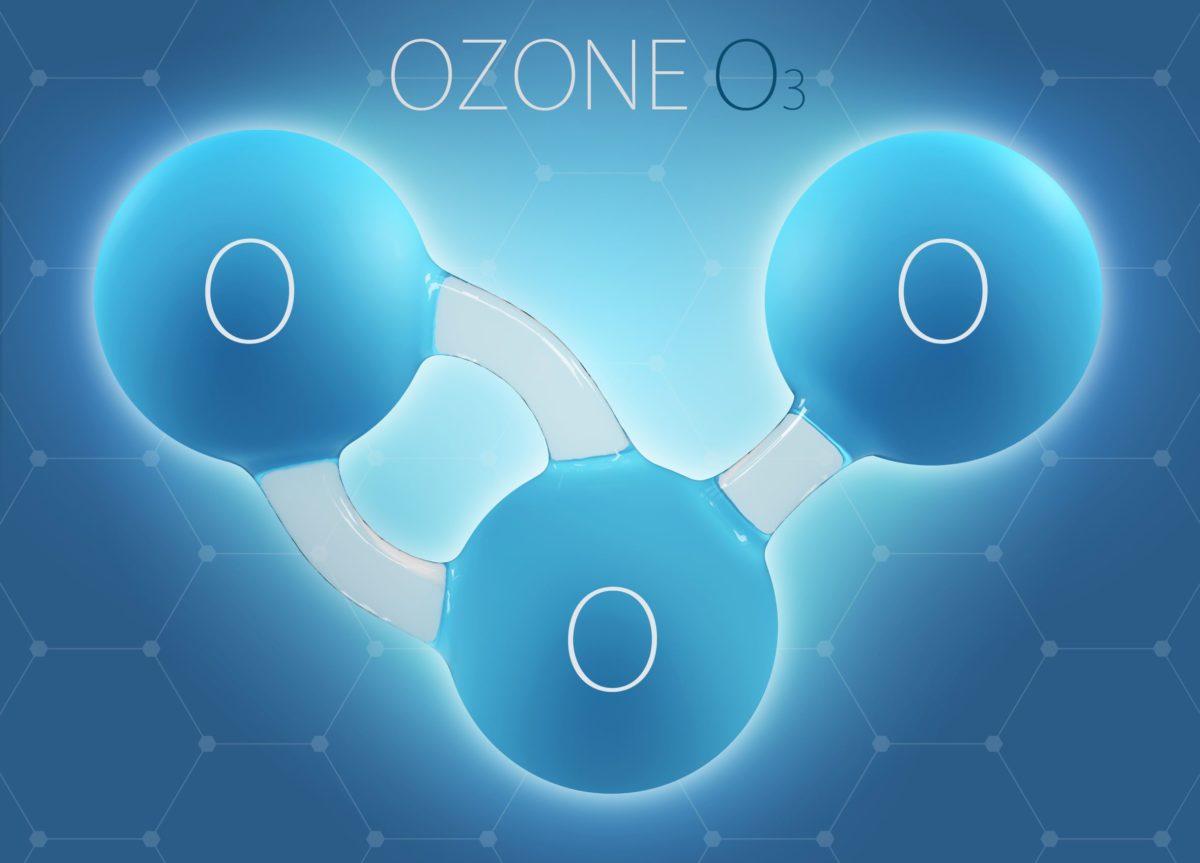Ozone Gas – A Useful, Serious Cleaning Tool

Ozone is a powerful tool in our arsenal of cleaning and remediation but it shouldn’t be used lightly! This time on the BioClean Team blog, we are explaining Ozone, its uses, and why it’s not something for DIY cleaners to mess with!
Ozone – It’s a Serious Gas
Ozone (O3) is a heavy gas and an incredible oxidant. For those who don’t want to read a whole bunch of Wikipedia, an oxidant (or oxidizing agent) is any substance that has the ability to accept the electrons of other substances. Meaning the oxidant destroys the other thing, and takes parts of it along with it.
When you smell a foul odor in your home, that is because oxygen (another oxidizing agent) has accepted some of the molecules – tiny, microscopic parts – of whatever nastiness is sitting around. It is still air, but now it has a little something extra. Ozone does the same thing.
Ozone is pumped into a space, where it then breaks down the oxygen molecules (that means the breathable air) and absorbs them into it. Thankfully, ozone doesn’t stay like that for long – once the generator is turned off the ozone will break down and settle, allowing the air to be breathed again safely after a couple of hours. (The chemical reason is that third oxygen atom breaks away and the O3 becomes O2)
Why Ozone Needs to be Handled with Caution and Experience
Ozone breaks down the breathable air of a space and can damage the soft surfaces of the room. If a person were to be in the room as the ozone is working they will lose breathable air – we breathe O2, not O3, and so with ozone breaking down everything in the environment, humans inside will have less and less air to breath. First, they will become light-headed and confused before losing consciousness and dying. The ozone can also damage the mucous membranes and other respiratory tissues (like lungs).
If left in place too long, the ozone can even breakdown the rubber in windows seals and wire casings. If the protective covering of a wire gets damaged, it creates an opening for electricity to pass through, causing sparks or worse.
Proper Ozone Use
Ozone, when used properly, is an amazing tool. It works great for odors as well as spore and virus control, but it isn’t the only step. It has to be a part of a total remediation plan – ozone is simply one of the (last) steps. Using ozone isn’t as simple as plopping down the generator and flipping it on. We follow the following steps to ensure safety.
-
- First, make sure that all living things are removed from the room or space.
- Cover or remove items that will be adversely affected by the gas. We know the best ways to clean these other materials, and ozone isn’t it.
- Start the ozone generator and set the timer. Running it for too long can damage the room/home.
- Wait. Depending on the size of the room, or home, it could be anywhere from 3 to 30 hours.
- When the timer is done it will shut off the generator automatically, but we don’t rush right in. You have to wait another hour or two for the ozone to settle and breathable air to fill the space again.
The BioClean Team has the experience and skills necessary to leverage powerful tools like ozone gas for remediation work, it’s not something you want to leave to chance. Give us a call to find out how the BioClean Team can help you restore your space, safely.
